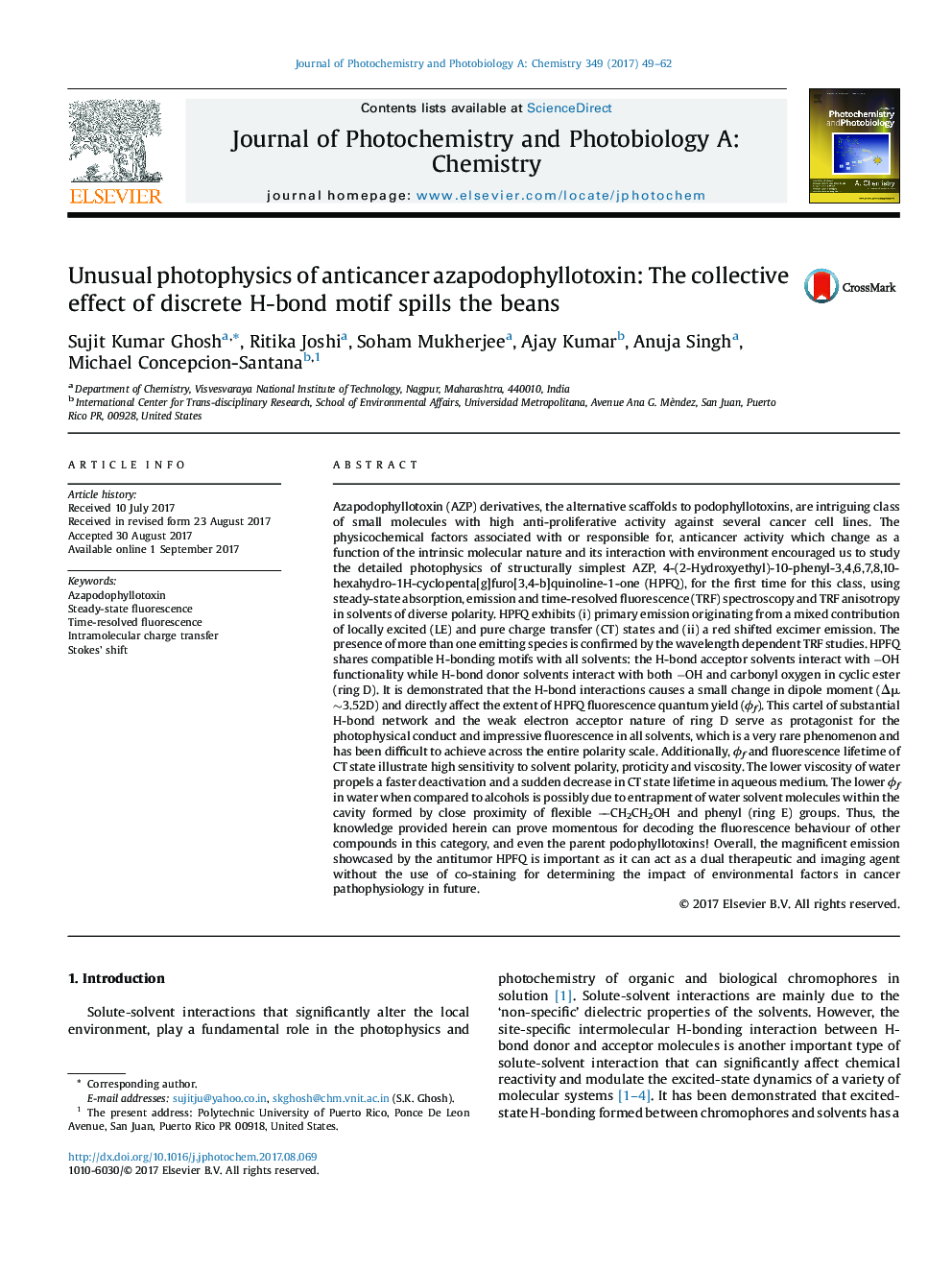| کد مقاله | کد نشریه | سال انتشار | مقاله انگلیسی | نسخه تمام متن |
|---|---|---|---|---|
| 4753769 | 1417591 | 2017 | 14 صفحه PDF | دانلود رایگان |
- First report on photophysics of anticancer HPFQ: The simplest azapodophyllotoxin.
- HPFQ represents weak ICT owing to weak accepting nature of cyclic ester ring.
- Solvatochromic models provide a quantitative measure of both Îμ and μe effectively.
- Anticancer HPFQ exhibits impressive Ïf in all solvents- a very rare phenomenon.
- Emerges as potential dual therapeutic and imaging agent for advanced cancer research.
Azapodophyllotoxin (AZP) derivatives, the alternative scaffolds to podophyllotoxins, are intriguing class of small molecules with high anti-proliferative activity against several cancer cell lines. The physicochemical factors associated with or responsible for, anticancer activity which change as a function of the intrinsic molecular nature and its interaction with environment encouraged us to study the detailed photophysics of structurally simplest AZP, 4-(2-Hydroxyethyl)-10-phenyl-3,4,6,7,8,10-hexahydro-1H-cyclopenta[g]furo[3,4-b]quinoline-1-one (HPFQ), for the first time for this class, using steady-state absorption, emission and time-resolved fluorescence (TRF) spectroscopy and TRF anisotropy in solvents of diverse polarity. HPFQ exhibits (i) primary emission originating from a mixed contribution of locally excited (LE) and pure charge transfer (CT) states and (ii) a red shifted excimer emission. The presence of more than one emitting species is confirmed by the wavelength dependent TRF studies. HPFQ shares compatible H-bonding motifs with all solvents: the H-bond acceptor solvents interact with âOH functionality while H-bond donor solvents interact with both âOH and carbonyl oxygen in cyclic ester (ring D). It is demonstrated that the H-bond interactions causes a small change in dipole moment (Îμ â¼3.52D) and directly affect the extent of HPFQ fluorescence quantum yield (Ïf). This cartel of substantial H-bond network and the weak electron acceptor nature of ring D serve as protagonist for the photophysical conduct and impressive fluorescence in all solvents, which is a very rare phenomenon and has been difficult to achieve across the entire polarity scale. Additionally, Ïf and fluorescence lifetime of CT state illustrate high sensitivity to solvent polarity, proticity and viscosity. The lower viscosity of water propels a faster deactivation and a sudden decrease in CT state lifetime in aqueous medium. The lower Ïf in water when compared to alcohols is possibly due to entrapment of water solvent molecules within the cavity formed by close proximity of flexible CH2CH2OH and phenyl (ring E) groups. Thus, the knowledge provided herein can prove momentous for decoding the fluorescence behaviour of other compounds in this category, and even the parent podophyllotoxins! Overall, the magnificent emission showcased by the antitumor HPFQ is important as it can act as a dual therapeutic and imaging agent without the use of co-staining for determining the impact of environmental factors in cancer pathophysiology in future.
TOC illustrates anticancer HPFQ featuring proficient emission in all solvents by virtue of weak accepting nature of α, β- unsaturated cyclic ester ring as a consequence of H-bonding interactions prevalent in all solvents.141
Journal: Journal of Photochemistry and Photobiology A: Chemistry - Volume 349, 1 December 2017, Pages 49-62
